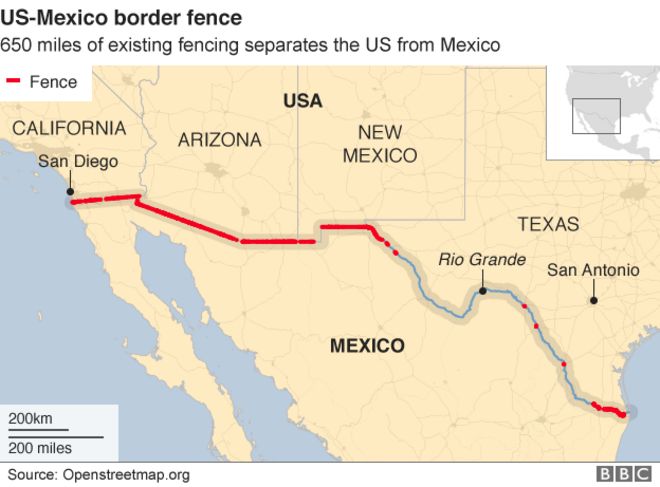The difference between weather and climate is a measure of time. Weather is what conditions of the atmosphere are over a short period of time, and climate is how the atmosphere "behaves" over relatively long periods of time.
When we talk about climate change, we talk about changes in long-term averages of daily weather. Today, children always hear stories from their parents and grandparents about how snow was always piled up to their waists as they trudged off to school. Children today in most areas of the country haven't experienced those kinds of dreadful snow-packed winters, except for the Northeastern U.S. in January 2005. The change in recent winter snows indicate that the climate has changed since their parents were young.
If summers seem hotter lately, then the recent climate may have changed. In various parts of the world, some people have even noticed that springtime comes earlier now than it did 30 years ago. An earlier springtime is indicative of a possible change in the climate.
In addition to long-term climate change, there are shorter term climate variations. This so-called climate variability can be represented by periodic or intermittent changes related to El Niño, La Niña, volcanic eruptions, or other changes in the Earth system.
What Weather Means
Weather is basically the way the atmosphere is behaving, mainly with respect to its effects upon life and human activities. The difference between weather and climate is that weather consists of the short-term (minutes to months) changes in the atmosphere. Most people think of weather in terms of temperature, humidity, precipitation, cloudiness, brightness, visibility, wind, and atmospheric pressure, as in high and low pressure.
In most places, weather can change from minute-to-minute, hour-to-hour, day-to-day, and season-to-season. Climate, however, is the average of weather over time and space. An easy way to remember the difference is that climate is what you expect, like a very hot summer, and weather is what you get, like a hot day with pop-up thunderstorms.
Things That Make Up Our Weather
There are really a lot of components to weather. Weather includes sunshine, rain, cloud cover, winds, hail, snow, sleet, freezing rain, flooding, blizzards, ice storms, thunderstorms, steady rains from a cold front or warm front, excessive heat, heat waves and more.
In order to help people be prepared to face all of these, the National Oceanic and Atmospheric Administration's (NOAA) National Weather Service (NWS), the lead forecasting outlet for the nation's weather, has over 25 different types of warnings, statements or watches that they issue. Some of the reports NWS issues are: Flash Flood Watches and Warnings, Severe Thunderstorm Watches and Warnings, Blizzard Warnings, Snow Advisories, Winter Storm Watches and Warnings, Dense Fog Advisory, Fire Weather Watch, Tornado Watches and Warnings, Hurricane Watches and Warnings. They also provide Special Weather Statements and Short and Long Term Forecasts.
NWS also issues a lot of notices concerning marine weather for boaters and others who dwell or are staying near shorelines. They include: Coastal Flood Watches and Warnings, Flood Watches and Warnings, High Wind Warnings, Wind Advisories, Gale Warnings, High Surf Advisories, Heavy Freezing Spray Warnings, Small Craft Advisories, Marine Weather Statements, Freezing Fog Advisories, Coastal Flood Watches, Flood Statements, Coastal Flood Statement.
Who is the National Weather Service?
According to their mission statement, "The National Weather Service provides weather, hydrologic, and climate forecasts and warnings for the United States, its territories, adjacent waters and ocean areas, for the protection of life and property and the enhancement of the national economy. NWS data and products form a national information database and infrastructure which can be used by other governmental agencies, the private sector, the public, and the global community."
To do their job, the NWS uses radar on the ground and images from orbiting satellites with a continual eye on Earth. They use reports from a large national network of weather reporting stations, and they launch balloons in the air to measure air temperature, air pressure, wind, and humidity. They put all this data into various computer models to give them weather forecasts. NWS also broadcasts all of their weather reports on special NOAA weather radio, and posts them immediately on their Interactive Weather Information Network website at: http://iwin.nws.noaa.gov/iwin/graphicsversion/bigmain.html.
When we talk about climate change, we talk about changes in long-term averages of daily weather. Today, children always hear stories from their parents and grandparents about how snow was always piled up to their waists as they trudged off to school. Children today in most areas of the country haven't experienced those kinds of dreadful snow-packed winters, except for the Northeastern U.S. in January 2005. The change in recent winter snows indicate that the climate has changed since their parents were young.
If summers seem hotter lately, then the recent climate may have changed. In various parts of the world, some people have even noticed that springtime comes earlier now than it did 30 years ago. An earlier springtime is indicative of a possible change in the climate.
In addition to long-term climate change, there are shorter term climate variations. This so-called climate variability can be represented by periodic or intermittent changes related to El Niño, La Niña, volcanic eruptions, or other changes in the Earth system.
What Weather Means
Weather is basically the way the atmosphere is behaving, mainly with respect to its effects upon life and human activities. The difference between weather and climate is that weather consists of the short-term (minutes to months) changes in the atmosphere. Most people think of weather in terms of temperature, humidity, precipitation, cloudiness, brightness, visibility, wind, and atmospheric pressure, as in high and low pressure.
In most places, weather can change from minute-to-minute, hour-to-hour, day-to-day, and season-to-season. Climate, however, is the average of weather over time and space. An easy way to remember the difference is that climate is what you expect, like a very hot summer, and weather is what you get, like a hot day with pop-up thunderstorms.
Things That Make Up Our Weather
There are really a lot of components to weather. Weather includes sunshine, rain, cloud cover, winds, hail, snow, sleet, freezing rain, flooding, blizzards, ice storms, thunderstorms, steady rains from a cold front or warm front, excessive heat, heat waves and more.
In order to help people be prepared to face all of these, the National Oceanic and Atmospheric Administration's (NOAA) National Weather Service (NWS), the lead forecasting outlet for the nation's weather, has over 25 different types of warnings, statements or watches that they issue. Some of the reports NWS issues are: Flash Flood Watches and Warnings, Severe Thunderstorm Watches and Warnings, Blizzard Warnings, Snow Advisories, Winter Storm Watches and Warnings, Dense Fog Advisory, Fire Weather Watch, Tornado Watches and Warnings, Hurricane Watches and Warnings. They also provide Special Weather Statements and Short and Long Term Forecasts.
NWS also issues a lot of notices concerning marine weather for boaters and others who dwell or are staying near shorelines. They include: Coastal Flood Watches and Warnings, Flood Watches and Warnings, High Wind Warnings, Wind Advisories, Gale Warnings, High Surf Advisories, Heavy Freezing Spray Warnings, Small Craft Advisories, Marine Weather Statements, Freezing Fog Advisories, Coastal Flood Watches, Flood Statements, Coastal Flood Statement.
Who is the National Weather Service?
According to their mission statement, "The National Weather Service provides weather, hydrologic, and climate forecasts and warnings for the United States, its territories, adjacent waters and ocean areas, for the protection of life and property and the enhancement of the national economy. NWS data and products form a national information database and infrastructure which can be used by other governmental agencies, the private sector, the public, and the global community."
To do their job, the NWS uses radar on the ground and images from orbiting satellites with a continual eye on Earth. They use reports from a large national network of weather reporting stations, and they launch balloons in the air to measure air temperature, air pressure, wind, and humidity. They put all this data into various computer models to give them weather forecasts. NWS also broadcasts all of their weather reports on special NOAA weather radio, and posts them immediately on their Interactive Weather Information Network website at: http://iwin.nws.noaa.gov/iwin/graphicsversion/bigmain.html.
What Climate Means
In short, climate is the description of the long-term pattern of weather in a particular area.
Some scientists define climate as the average weather for a particular region and time period, usually taken over 30-years. It's really an average pattern of weather for a particular region.
When scientists talk about climate, they're looking at averages of precipitation, temperature, humidity, sunshine, wind velocity, phenomena such as fog, frost, and hail storms, and other measures of the weather that occur over a long period in a particular place.
For example, after looking at rain gauge data, lake and reservoir levels, and satellite data, scientists can tell if during a summer, an area was drier than average. If it continues to be drier than normal over the course of many summers, than it would likely indicate a change in the climate.
Why Study Climate?
The reason studying climate and a changing climate is important, is that will affect people around the world. Rising global temperatures are expected to raise sea levels, and change precipitation and other local climate conditions. Changing regional climate could alter forests, crop yields, and water supplies. It could also affect human health, animals, and many types of ecosystems. Deserts may expand into existing rangelands, and features of some of our National Parks and National Forests may be permanently altered.
In short, climate is the description of the long-term pattern of weather in a particular area.
Some scientists define climate as the average weather for a particular region and time period, usually taken over 30-years. It's really an average pattern of weather for a particular region.
When scientists talk about climate, they're looking at averages of precipitation, temperature, humidity, sunshine, wind velocity, phenomena such as fog, frost, and hail storms, and other measures of the weather that occur over a long period in a particular place.
For example, after looking at rain gauge data, lake and reservoir levels, and satellite data, scientists can tell if during a summer, an area was drier than average. If it continues to be drier than normal over the course of many summers, than it would likely indicate a change in the climate.
Why Study Climate?
The reason studying climate and a changing climate is important, is that will affect people around the world. Rising global temperatures are expected to raise sea levels, and change precipitation and other local climate conditions. Changing regional climate could alter forests, crop yields, and water supplies. It could also affect human health, animals, and many types of ecosystems. Deserts may expand into existing rangelands, and features of some of our National Parks and National Forests may be permanently altered.
The National Academy of Sciences, a lead scientific body in the U.S., determined that the Earth's surface temperature has risen by about 1 degree Fahrenheit in the past century, with accelerated warming during the past two decades. There is new and stronger evidence that most of the warming over the last 50 years is attributable to human activities. Yet, there is still some debate about the role of natural cycles and processes.
Human activities have altered the chemical composition of the atmosphere through the buildup of greenhouse gases – primarily carbon dioxide, methane, and nitrous oxide. The heat-trapping property of these gases is undisputed although uncertanties exist about exactly how Earth's climate responds to them. According to the U.S. Climate Change Science Program (http://www.climatescience.gov), factors such as aerosols, land use change and others may play important roles in climate change, but their influence is highly uncertain at the present time.
Who Studies Climate Change?
Modern climate prediction started back in the late 1700s with Thomas Jefferson and continues to be studied around the world today.
At the national level, the U.S. Global Change Research Program coordinates the world's most extensive research effort on climate change. In addition, NASA, NOAA, the U.S. Environmental Protection Agency (EPA) and other federal agencies are actively engaging the private sector, states, and localities in partnerships based on a win-win philosophy and aimed at addressing the challenge of global warming while, at the same time, strengthening the economy. Many university and private scientists also study climate change.
What is the U.S. Global Change Research Program?
The United States Global Change Research Program (USGCRP) was created in 1989 as a high-priority national research program to address key uncertainties about changes in the Earth's global environmental system, both natural and human-induced; to monitor, understand, and predict global change; and to provide a sound scientific basis for national and international decision-making.
Since its inception, the USGCRP has strengthened research on global environmental change and fostered insight into the processes and interactions of the Earth system, including the atmosphere, oceans, land, frozen regions, plants and animals, and human societies. The USGCRP was codified by Congress in the Global Change Research Act of 1990. The basic rationale for establishing the program was that the issues of global change are so complex and wide-ranging that they extend beyond the mission, resources, and expertise of any single agency, requiring instead the integrated efforts of several agencies.
Some Federal Agencies Studying Climate
In the 1980s the National Weather Service established the Climate Prediction Center (CPC), known at the time as the Climate Analysis Center (CAC). The CPC is best known for its United States climate forecasts based on El Niño and La Niña conditions in the tropical Pacific.
CPC was established to give short-term climate prediction a home in NOAA. CPC's products are operational predictions or forecasts of how climate may change and includes real-time monitoring of climate. They cover the land, the ocean, and the atmosphere, extending into the upper atmosphere (stratosphere). Climate prediction is very useful in various industries, including agriculture, energy, transportation, water resources, and health.
NASA has been using satellites to study Earth's changing climate. Thanks to satellite and computer model technology, NASA has been able to calculate actual surface temperatures around the world and measure how they've been warming. To accomplish the calculations, the satellites actually measure the Sun's radiation reflected and absorbed by the land and oceans.NASA satellites keep eyes on the ozone hole, El Nino's warm waters in the eastern Pacific, volcanoes, melting ice sheets and glaciers, changes in global wind and pressure systems and much more.
NASA has been using satellites to study Earth's changing climate. Thanks to satellite and computer model technology, NASA has been able to calculate actual surface temperatures around the world and measure how they've been warming. To accomplish the calculations, the satellites actually measure the Sun's radiation reflected and absorbed by the land and oceans.NASA satellites keep eyes on the ozone hole, El Nino's warm waters in the eastern Pacific, volcanoes, melting ice sheets and glaciers, changes in global wind and pressure systems and much more.
At the global level, countries around the world have expressed a firm commitment to strengthening international responses to the risks of climate change. The U.S. is working to strengthen international action and broaden participation under the support of the United Nations Framework Convention on Climate Change.
Today, scientists around the world continue to try and solve the puzzle of climate change by working with satellites, other tools and computer models that simulate and predict the Earth's conditions.






